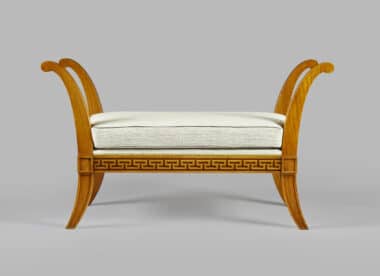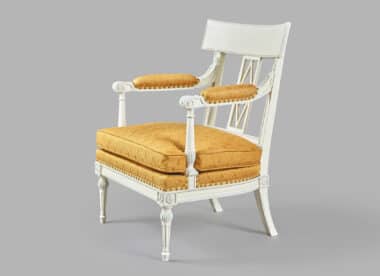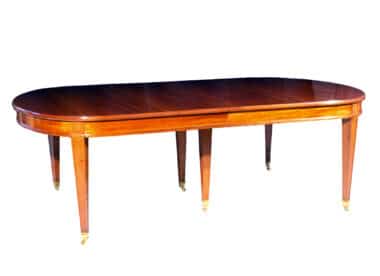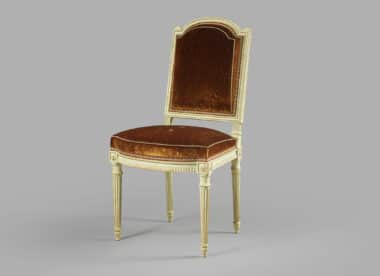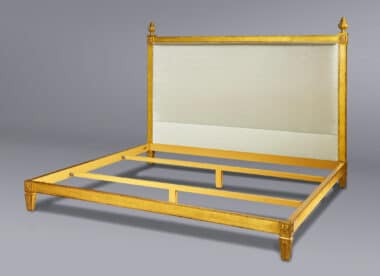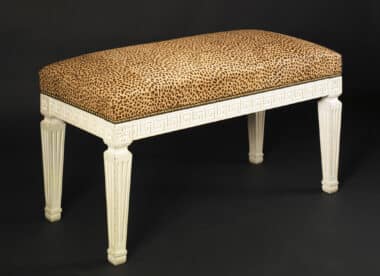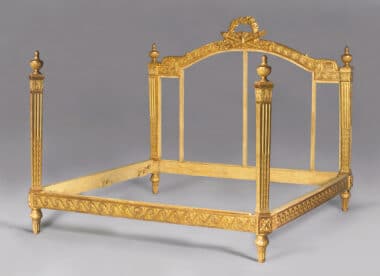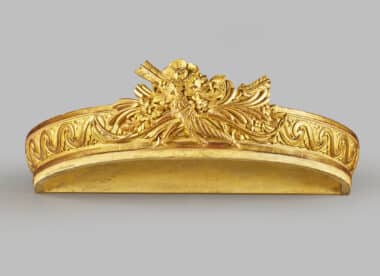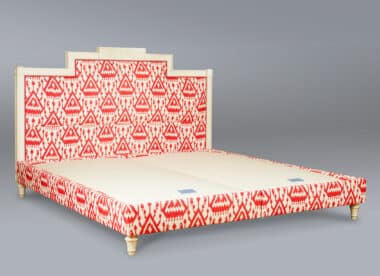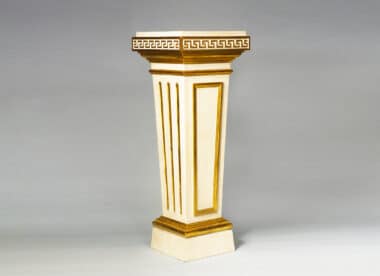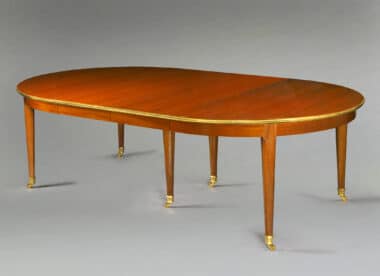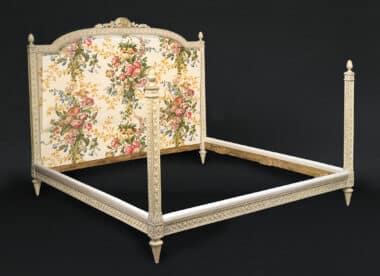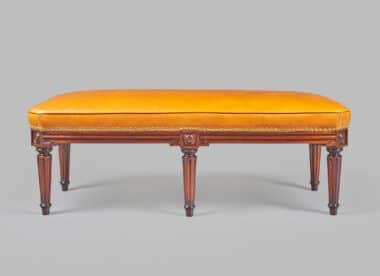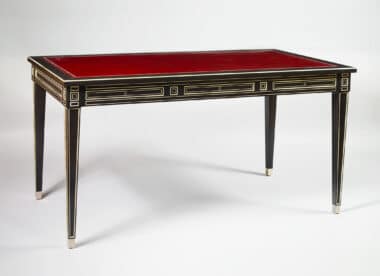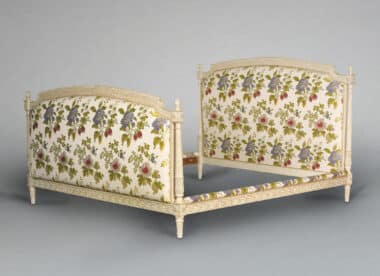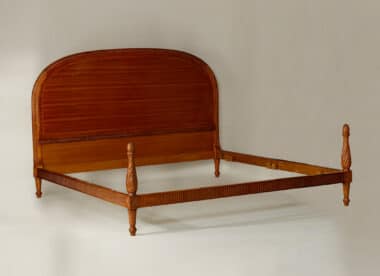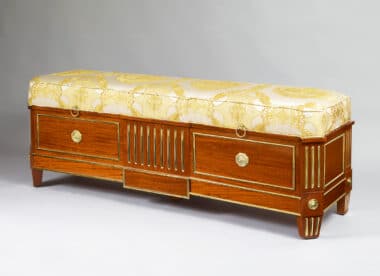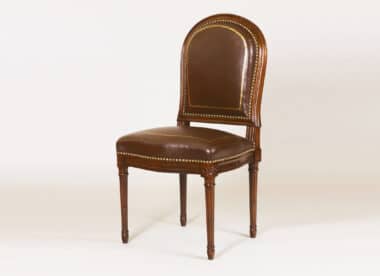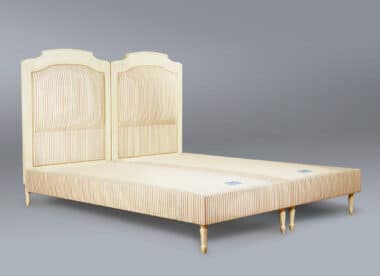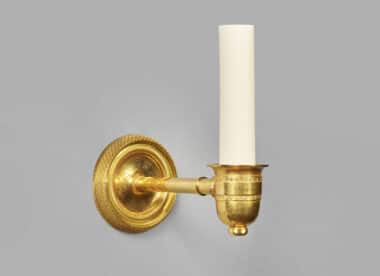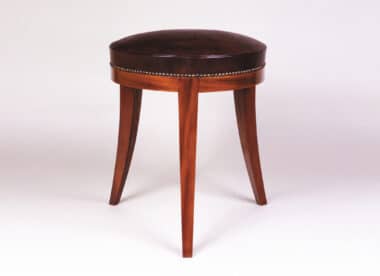LOUIS XVI STYLE
The Louis XVI style is a neoclassical design movement that emerged in France during the late 18th century, particularly during the reign of Louis XVI (1774–1792). Influenced by the discovery of the ruins of Pompeii, this style is characterized by a return to classical forms and motifs, drawing inspiration from ancient Greek and Roman aesthetics. It represents a departure from the exuberance of the preceding Rococo style and reflects a desire for simplicity and clarity.
This style emphasizes symmetry and order, straight lines and rectangular shapes. Furniture, architecture, and decorative elements are characterized by balanced and harmonious designs.
It also displays floral and classical decorative motifs including acanthus leaves, friezes of pearls, Greek friezes… These details add a touch of delicacy and elegance.
Cabinet-makers such as Jean-Henri Riesener and David Roentgen created crafted desks, commodes and cabinets for the royal residences. They used inlays of fine woods, particularly mahogany, decorated with gilded bronze. Equally fine sets of chairs and tables were made by Jean-Henri Riesener and Georges Jacob. Louis XVI furniture features straight legs, often tapered or fluted, and square or rectangular seat backs. Chairs might have oval or square backs with classical motifs. Commodes and cabinets display clean lines and restrained ornamentation.
The Louis XVI style remains a classic and timeless influence on design, providing a foundation for later neoclassical revivals. It continues to be admired for its elegance and sophistication.








